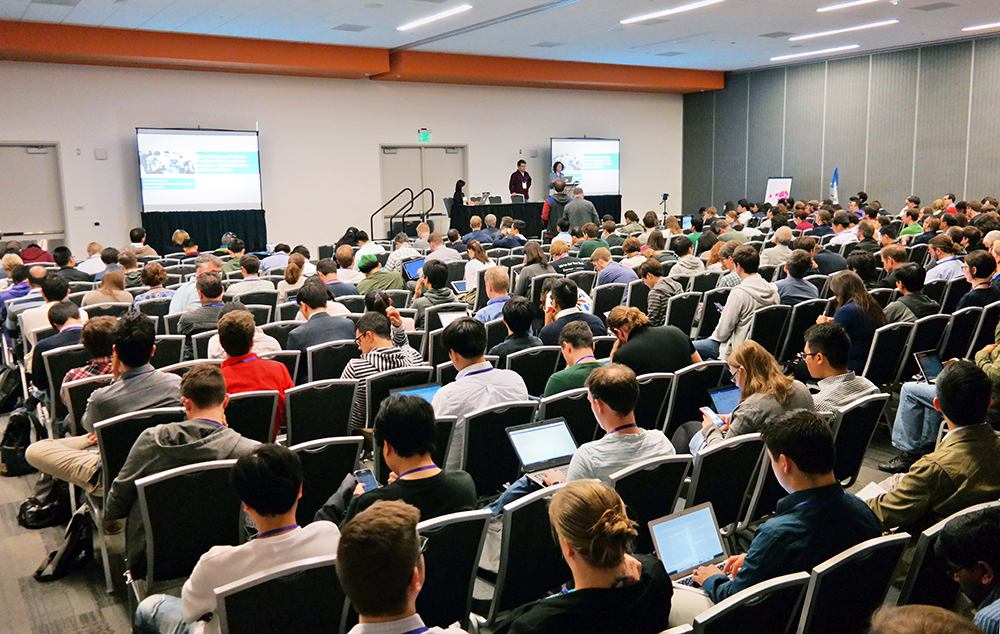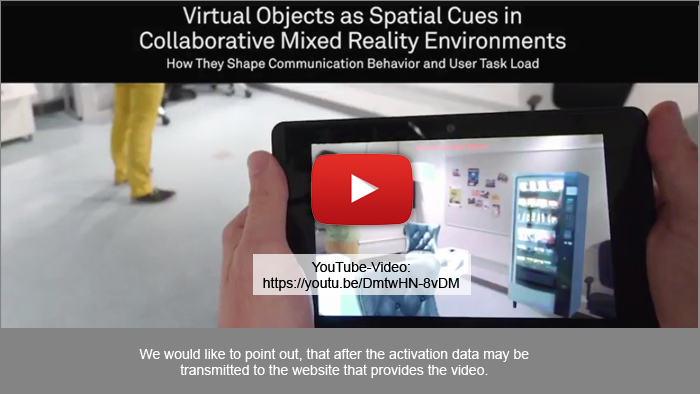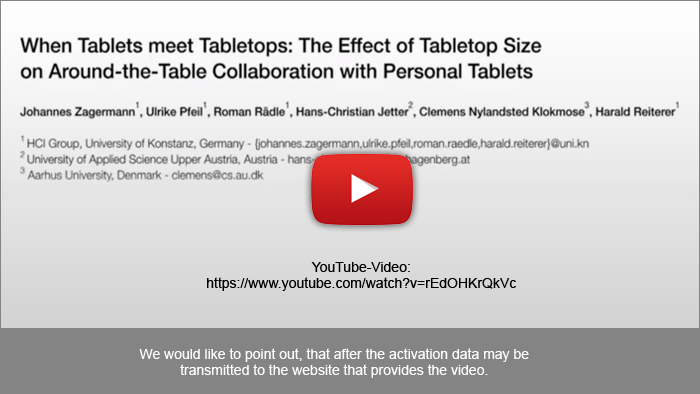Last month we had the pleasure to attend the CHI 2016 conference in San José, USA. ACM CHI is the international top conference for Human-Computer Interaction. It brings together top researchers from academia and industry from around the world.

Besides co-organizing the Second International Workshop on Interacting with Multi-Device ecologies “in the wild”, and receiving an honorable mention award for the paper Diving in at the Deep End: The Value of Alternative In-Situ Approaches for Systematic Library Search, multiple members of our group were happy to present their work:
Jens Müller presented his note on Virtual Objects as Spatial Cues in Collaborative Mixed Reality Environments: How They Shape Communication Behavior and User Task Load. The paper reports results from a user study, where dyads had to solve an object identification task (based on the well-known Memory Card game) in a mixed reality environment. In one of the two conditions, additive virtual objects where placed in the room that served as spatial cues. Jens Müller recommends to use additive virtual objects as spatial cues to help collaborators exchange spatial information, to decrease user task load, and to improve user experience.
Ulrike Pfeil and Johannes Zagermann presented their paper on When Tablets meet Tabletops: The Effect of Tabletop Size on Around-the-Table Collaboration with Personal Tablets. The paper reports results from a user study, where dyads had to solve a collaborative sensemaking task consisting of a high number of news articles, that had to be read, filtered and connected in order to come up with a solution to a hidden plot. The study examined the effects and influences of tabletop size on collaborative cross-device sensemaking. Results show that a small tabletop can influence communication activities, resulting in face-to-face talk, whereas a large tabletop can attract more visual attention and lead to playful interaction.



